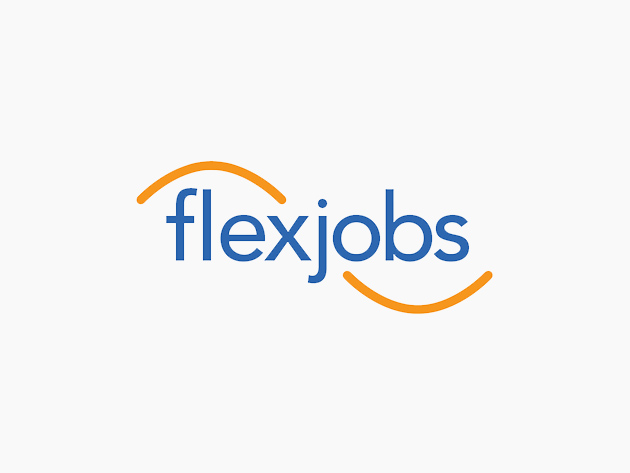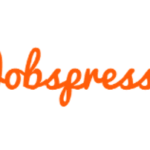So, you’re hunting for a remote job, huh? Maybe you’re dreaming of working from a cozy coffee shop—or, let’s be real, your couch in sweatpants. The remote work boom has turned job boards into goldmines, but not all platforms are created equal. Two big players, FlexJobs and We Work Remotely, dominate the scene. Both promise to connect you with legit remote gigs, but which one’s the real deal? I’ve been down this road myself, sifting through job boards while juggling coffee and ambition, and I’m here to break it all down—warts, wins, and all. Let’s dive in.
The Remote Work Revolution (And Why These Sites Matter)
Remote work isn’t just a trend; it’s a lifestyle now. Back in 2020, when the world hit pause, companies scrambled to go remote, and suddenly, working from home wasn’t just for freelancers or tech bros. Fast forward to April 2025, and remote jobs are everywhere—marketing, customer service, even executive roles. But here’s the catch: finding legit remote jobs can feel like searching for a needle in a haystack. Scams lurk, and sketchy listings waste your time. That’s where FlexJobs and We Work Remotely come in. They’re like the bouncers at the remote job club, keeping the riffraff out (mostly). But which one’s better for you? Let’s unpack each platform, toss in some personal stories, and figure it out.
FlexJobs: The Paid VIP Experience
Picture this: It’s 2019, and I’m fresh out of a soul-sucking office job, desperate for something remote. A friend mentions FlexJobs, and I’m intrigued but skeptical. A paid job board? Really? Founded in 2007 by Sara Sutton, FlexJobs is like the premium subscription of remote job hunting. It’s not free—more on that later—but it’s built a reputation for quality. With over 20,000 jobs from 5,000+ companies, it’s a beast of a database. Think marketing, IT, education, even C-suite roles. If variety’s your thing, FlexJobs has it in spades.
What sets it apart? Every job is hand-screened. No scams, no shady “work-from-home” pyramid schemes. I remember applying to a “too good to be true” job years ago—spoiler: it was a scam. FlexJobs eliminates that nonsense. Plus, it’s got bells and whistles: advanced search filters (location, salary, part-time vs. full-time), resume reviews, career coaching, webinars, even virtual job fairs. It’s like a career counselor and job board rolled into one.
But here’s the rub: you gotta pay. A subscription runs about $20 a month (with promo codes, sometimes less). For me, that stung at first. I was broke, sipping instant coffee, and $20 felt like a splurge. But after landing a freelance writing gig through FlexJobs that paid for the subscription tenfold, I was sold. The catch? The interface feels like it’s stuck in 2010. Navigation’s clunky, and I’ve cursed at the screen more than once trying to find the “save job” button. Still, the sheer volume and quality make it a heavyweight.
We Work Remotely: The Free Tech Haven
Now, let’s talk We Work Remotely (WWR). Launched in 2011, it’s the scrappy underdog of remote job boards, backed by Tiny Capital. It’s free for job seekers—yep, no wallet required—and it’s got a cult following, especially among tech folks. I stumbled across WWR in 2021 when I was itching to pivot into content strategy for a startup. A quick browse, and I was hooked: clean design, straightforward listings, and jobs from companies like Basecamp and GitLab.
WWR’s strength is its focus. It’s tech-heavy—think programming, design, customer support—but it’s not just for coders. Marketing and biz ops roles pop up too. The search function’s solid: filter by keywords, categories, even time zones (a lifesaver if you’re dodging 3 a.m. meetings). It’s got hundreds of jobs, not thousands like FlexJobs, but they’re from reputable companies. I once applied to a content role at a startup through WWR and got an interview within a week. The process felt seamless, and the job was 100% remote, no strings attached.
The downside? No mention of job vetting. FlexJobs brags about its screening process, but WWR’s a bit coy. I’ve never run into a scam there, but the lack of clarity makes me raise an eyebrow. Also, the resources are thinner—some remote work trend reports and a “Remote Leader Playbook,” but nothing like FlexJobs’ career coaching. Oh, and the interface? It’s cleaner than FlexJobs but not perfect. I’ve clicked on jobs only to find vague descriptions or broken links. Annoying, but not a dealbreaker.
Head-to-Head: The Showdown
Alright, let’s put these two in the ring. I’ve used both platforms, and each has its vibe. Here’s how they stack up.
Job Volume and Variety
FlexJobs is the Costco of job boards—massive, diverse, everything from entry-level to executive. With 20,000+ jobs across industries like healthcare, education, and tech, it’s a one-stop shop. I once found a remote teaching gig for a friend who’s a history buff, and the same day, I spotted a data analyst role for my cousin. It’s that broad.
WWR, meanwhile, is more like a boutique. Hundreds of jobs, not thousands, and heavily skewed toward tech—programming, design, support. If you’re in tech, it’s a goldmine. If you’re, say, a therapist or HR pro, you might feel left out. That said, I’ve seen non-tech roles sneak in, like marketing or ops, so don’t write it off completely.
Job Quality and Vetting
FlexJobs’ hand-screened jobs are its superpower. I’ve never worried about scams there, which is huge after my 2018 run-in with a sketchy “data entry” job that asked for my bank details. Shudder. WWR doesn’t advertise vetting, which makes me nervous. But in my experience, the companies posting there—like Automattic or Zapier—are legit. Still, FlexJobs feels safer.
Cost
Here’s where it gets spicy. FlexJobs charges $20 a month (less with deals). For some, that’s a small price for peace of mind. For others, it’s a dealbreaker. I remember debating whether to renew my subscription while staring at my bank account. WWR? Free. Zero risk. If you’re broke or just testing the waters, WWR’s your jam.
Search Functionality
Both platforms have solid search tools, but they’re not perfect. FlexJobs’ filters are robust—salary, location, job type—but the layout’s messy. I’ve spent way too long clicking through clunky menus. WWR’s search is simpler, with keyword and category options, plus a time zone filter that’s clutch for global teams. But sometimes, the results feel too broad. Like, searching “marketing” and getting 50 unrelated roles. Ugh.
User Experience
FlexJobs’ interface is… dated. Think early-2000s vibes. I’ve gotten lost in its menus, and the mobile experience isn’t much better. WWR’s cleaner, more modern, but it’s not flawless. I’ve clicked on jobs only to find outdated postings or vague descriptions. Both could use a glow-up, but WWR feels less frustrating.
Resources
FlexJobs is like a career coach in your pocket. Resume reviews, webinars, job fairs—it’s got it all. I once attended a FlexJobs webinar on remote interviews, and it was a game-changer for nailing virtual first impressions. WWR offers some reports and a playbook, but it’s bare-bones. If you want hand-holding, FlexJobs wins.
Employer Perspective
For employers, FlexJobs is pricier but reaches a massive audience (5M+ monthly hits). WWR’s cheaper to post on and attracts a niche, tech-savvy crowd (4.5M visitors). As a freelancer, I’ve worked with clients who used both, and they raved about WWR’s affordability but loved FlexJobs’ reach.
The Good, The Bad, The Funny
Let’s get real with the pros and cons. No platform’s perfect, and I’ve got stories to prove it.
FlexJobs
Pros: Huge job database, vetted listings, diverse industries, killer resources. That freelance writing gig I landed? It came with a steady paycheck and a boss who didn’t micromanage. Dreamy.
Cons: The cost. That $20 hit hard when I was scraping by. And the interface? It’s like navigating a maze designed by someone who hates fun. I once spent 10 minutes trying to update my profile, only to realize the “save” button was hidden behind a pop-up ad. Facepalm.
We Work Remotely
Pros: Free, tech-focused, simple search, legit companies. I applied to that content strategy role in 2021 and got a reply from a real human, not a bot. Plus, no subscription fees meant I could browse guilt-free.
Cons: Smaller job pool, tech-heavy, no clear vetting. And the occasional broken link? It’s like showing up to a party only to find the host left. Also, if you’re not in tech, the pickings are slim.
Who’s It For? (And My Two Cents)
So, who should use what? Here’s my take, flavored with some hard-earned lessons.
FlexJobs: If you’re in a non-tech field—like education, healthcare, or HR—FlexJobs is your best bet. The vetted jobs and resources are worth the cost if you’re serious about landing a gig. It’s also great if you want career support, like resume tweaks or interview tips. I’d recommend it to my friend who’s a remote therapist or my cousin chasing a C-suite role. Just be ready to pay and tolerate the clunky design.
We Work Remotely: Tech folks, this one’s for you. Programmers, designers, support specialists—WWR’s got your back. It’s also perfect if you’re on a budget or just dipping your toes into remote work. I’d tell my coder buddy to start










